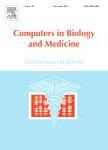版权所有:内蒙古大学图书馆 技术提供:维普资讯• 智图
内蒙古自治区呼和浩特市赛罕区大学西街235号 邮编: 010021

作者机构:Inner Mongolia Univ Sci & Technol Sch Informat Engn Inner Mongolia Key Lab Pattern Recognit & Intellig Baotou 014010 Peoples R China Inner Mongolia Univ Technol Sch Informat Engn Hohhot 010051 Peoples R China
出 版 物:《COMPUTERS IN BIOLOGY AND MEDICINE》 (生物学与医学中的计算机)
年 卷 期:2024年第168卷
页 面:107832-107832页
核心收录:
学科分类:0831[工学-生物医学工程(可授工学、理学、医学学位)] 0710[理学-生物学] 07[理学] 09[农学] 0812[工学-计算机科学与技术(可授工学、理学学位)]
基 金:National Natural Science Foundation of China [62001255, 61841204, 61771266] Fundamental Research Funds for Inner Mongolia University of Science Technology Inner Mongolia College Science and Technology Research Project [NJZY145] Central Government Guides Local Science and Technology Development Fund Project of China [2021ZY0004] Program for Young Talents of Science and Technology in Universities of Inner Mongolia Autonomous Region [NJYT23057]
主 题:Transformer model Encoder-decoder architecture Medical images Non-rigid registration Feature fusion
摘 要:Background and objective: Non-rigid image registration plays a significant role in computer-aided diagnosis and surgical navigation for brain diseases. Registration methods that utilize convolutional neural networks (CNNs) have shown excellent accuracy when applied to brain magnetic resonance images (MRI). However, CNNs have limitations in understanding long-range spatial relationships in images, which makes it challenging to incorporate contextual information. And in intricate image registration tasks, it is difficult to achieve a satisfactory dense prediction field, resulting in poor registration ***: This paper proposes a multi-level deformable unsupervised registration model that combines Trans-former and CNN to achieve non-rigid registration of brain MRI. Firstly, utilizing a dual encoder structure to establish the dependency relationship between the global features of two images and to merge features of varying scales, as well as to preserve the relative spatial position information of feature maps at different scales. Then the proposed multi-level deformation strategy utilizes different deformable fields of varying resolutions generated by the decoding structure to progressively deform the moving image. Ultimately, the proposed quadruple attention module is incorporated into the decoding structure to merge feature information from various directions and emphasize the spatial features in the dominant ***: The experimental results on multiple brain MR datasets demonstrate that the promising network could provide accurate registration and is comparable to state-of-the-art ***: The proposed registration model can generate superior deformable fields and achieve more precise registration effects, enhancing the auxiliary role of medical image registration in various fields and advancing the development of computer-aided diagnosis, surgical navigation, and related domains.